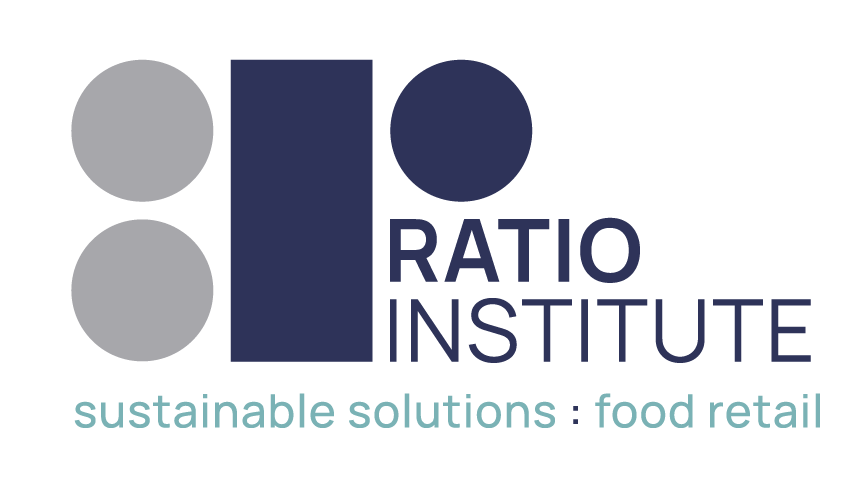Ten Strategies for Food Retail Companies to Take ESG Reporting to the Next Level
November 21, 2022|Jonathan Tan, Peter Cooke
Increasingly, consumers shop at food retailers that are transparent about their community and environmental initiatives. In fact, 83% of consumers think that companies should be actively shaping environmental, social, and governance (ESG) best practices.
Ratio Institute has found that reporting on ESG practices with purpose drives the most benefits for companies. By reporting with purpose, we mean systematic, consistent, and comprehensive reporting and analysis of quantitative and qualitative data across a clearly defined set of criteria, with a genuine intention of achieving process, performance, and profit improvement. ESG reporting with purpose can increase market share, reduce costs, increase employee engagement and retention, improve return on assets, and mitigate regulatory effects on businesses.
However, the numerous complexities of food retail operations can challenge the reporting efforts of the most well-intentioned companies. Ratio Institute launched the Food Retail ESG Reporting Standard to provide a cohesive, systematic reporting approach to drive process, performance, and profit improvement.
Ratio Institute’s standard, Sustainable Food Retail Certification, and industry advice can help food retailers determine what is relevant to their respective organizations, communities, and other stakeholders, enabling companies to maximize ESG improvements. Download the standard and use these ten strategies to improve your ESG reporting.
#1: Sponsorship from Executive Leadership
Executive sponsorship of ESG reporting can align organizations on a shared vision of what is most relevant to the business and its communities, employees, consumers, investors, and other stakeholders. It shows stakeholders that the organization prioritizes strong ESG performance. A best-in-class example is this letter from Keith E. Knopf, CEO of Raley’s. It is prominently featured in the company’s 2020 Impact Report. This is a good place to address any shortcomings, celebrate milestones, and describe future goals.
#2: Start with a Materiality Assessment
Conduct a materiality assessment, which involves gathering input from internal and external stakeholders to identify and prioritize the ESG topics that matter most to a company and its stakeholders. The assessment can inform a systematic company-wide ESG strategy and effective reporting practices to support that strategy. It signals that ESG goals are meaningful to shoppers, employees, communities, investors, and other groups. Target sets a good example. The company clearly outlines how it engages with various stakeholders, the topics discussed with them, and its response to those engagements.
#3: Present Clearly Stated Commitments
 Clearly stated commitments and policies provide transparency for a company’s stakeholders. They help current and prospective employees understand its ethos. And they enable consumers to determine whether a company is aligned with their values. Clear statements are especially important for areas such as diversity, equity, and inclusion (DEI); health and safety; and employee rights. Walmart’s climate aspirations and goals are a shining example of clearly stated commitments.
Clearly stated commitments and policies provide transparency for a company’s stakeholders. They help current and prospective employees understand its ethos. And they enable consumers to determine whether a company is aligned with their values. Clear statements are especially important for areas such as diversity, equity, and inclusion (DEI); health and safety; and employee rights. Walmart’s climate aspirations and goals are a shining example of clearly stated commitments.
#4: Use Science-Based Targets for ESG Goals
The Science-Based Targets Initiative (SBTi) makes it easier than ever to set greenhouse gas emissions reduction goals—and define a pathway to achieving them. Carbon reduction goals are considered “science-based” if they align with what the latest climate science deems necessary to limit global warming to 1.5°C above pre-industrial levels. By using a formal approach to gather and analyze data, science-based targets can also help quantify the financial value associated with various activities.
#5: Create a Formal Report That Is Easily Accessible to Consumers
A formal ESG report defines, quantifies, and analyzes metrics and activities and tracks progress against targets. Albertson’s 2021 ESG report is a good example, providing quantitative data to characterize its achievements. Smaller food retailers, or stores just beginning their ESG efforts, can use a simplified report or webpage.
#6: Report Consistently
ESG reporting requires consistent collaboration, tracking, and reporting to stakeholders. Consistent reporting helps organizations track their progress against their goals and show financial improvement over time. Loblaw’s 2021 ESG Report defines the company’s ESG targets and tracks its performance against those targets over several years. For example, the report states:
“In 2018, we set an initial commitment to reduce food waste to landfill across our corporate operations by 50% by 2025 from a 2016 baseline—a goal we surpassed in 2020, five years ahead of plan.”
#7: Share Successes and Best Practices
Tell your stakeholders about your ESG best practices and successes. For example, you can provide details on their responsible sourcing activities so that consumers know what they support when they shop at your stores—whether it be fair-trade coffee, organic produce, or diverse suppliers. Organizing and distilling this information in an ESG report can give a company a competitive advantage, so it will attract more customers and increase profits. A prime example is Sobeys’ sustainable business report, which provides details on ethical and sustainable sourcing.
#8: Report on Community Impact
 Most food retailers donate funds to local entities, support employees’ volunteer hours, and send in-kind donations to nonprofit organizations. Publicize these initiatives, explain why they matter, and quantify their scope. A great example of this is Kroger’s Community page, which highlights programs to cut food waste, a Kroger-USO mobile food kitchen, and relief for communities impacted by natural disasters.
Most food retailers donate funds to local entities, support employees’ volunteer hours, and send in-kind donations to nonprofit organizations. Publicize these initiatives, explain why they matter, and quantify their scope. A great example of this is Kroger’s Community page, which highlights programs to cut food waste, a Kroger-USO mobile food kitchen, and relief for communities impacted by natural disasters.
#9: Address the Negative
Negative press, operational fines, and other information damaging to a brand can be turned into a positive opportunity. A company can take its transparency to the next level by acknowledging missteps and providing an actionable plan to address them.
#10: Be Transparent about Missed Targets
Many factors such as COVID and other extenuating circumstances can slow progress toward ESG goals. Build trust by explaining why a target was missed and outlining actions to correct course.
A common theme among these ten strategies is reporting with purpose and measuring what matters: process, performance, and profit. Ratio Institute’s Food Retail ESG Reporting Standard and Sustainable Food Retail Certification are designed to help companies do just that—and ultimately drive operational success. If you are interested in partnering with us to pursue your ESG goals or have questions about food retail ESG, please contact us.

